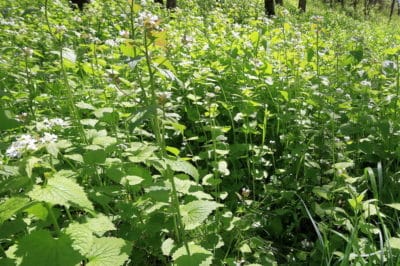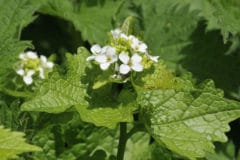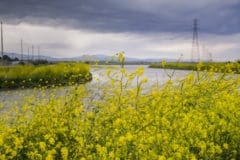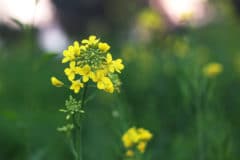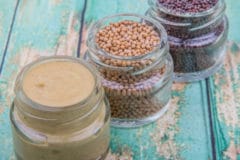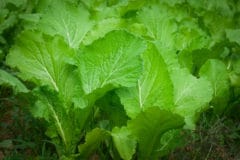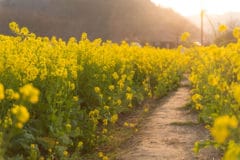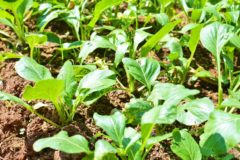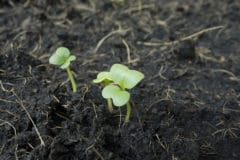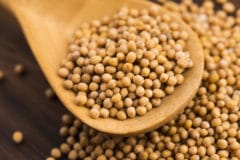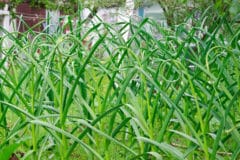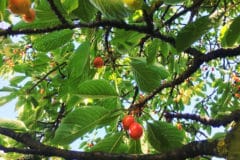Description
There are many species of wild mustard throughout the old and new worlds. Alliaria petiolata is the garlic mustard weed, named Alliaria after alliums because of its garlicky or horseradish flavor.
It is a biennial plant appearing just as a small cluster of low lying leaves the first year and developing flowers the second year. In its second year, it grows to about 40 inches tall and produces clusters of cross-shaped white flowers. They give way to pods containing thousands of mustard seeds.
History
Native to Europe, garlic mustard weed could be the oldest cultivated spice crop in the region dating back to between 4100-3750 B.C.E. It grows wild near houses and hedgerows, and people use it to add flavor to dishes. When crushed all parts of the plant emit a strong garlic-like odor and flavor. They ate it as a source of vitamins A and C, and they used it to treat symptoms of gangrene and ulcer.
Naturally, when settlers headed across the ocean they brought Alliaria petiolata with them to plant as a food and medicine. Unfortunately, its story in the Americas is less than savory. There are no natural predators of garlic mustard in North America. In fact, compounds produced in the flower prove toxic to some native butterfly species.
Garlic mustard is allelopathic, meaning that it suppresses the growth of nearby grass and herbs eliminating native competition. It’s not what you want to find in your pasture, cows have been known to get sick after eating too much mustard weed. Scientists are searching for a method of biological control to keep it from invading grasslands and pasture.
Mustard Uses and Characteristics:
- Edible Green
- Seeds and Flowers used as a spice
- Used as a disinfectant and diuretic
- Noxious weed outside of native ecosystem
As A Food
Traditionally throughout its native range, which almost spanned the entire ancient world, it’s a staple green. Young leaves are eaten raw or cooked. They add a slight bitterness and flavor profile to salads when raw, and taste similar to a spicy collard when cooked.
The cross-shaped white flowers are added to wines and vinegar to give them a kick. The seeds of the mustard family are where the modern condiment mustard comes from. They are crushed and added to spices and vinegar to create the yellow sandwich spread.
